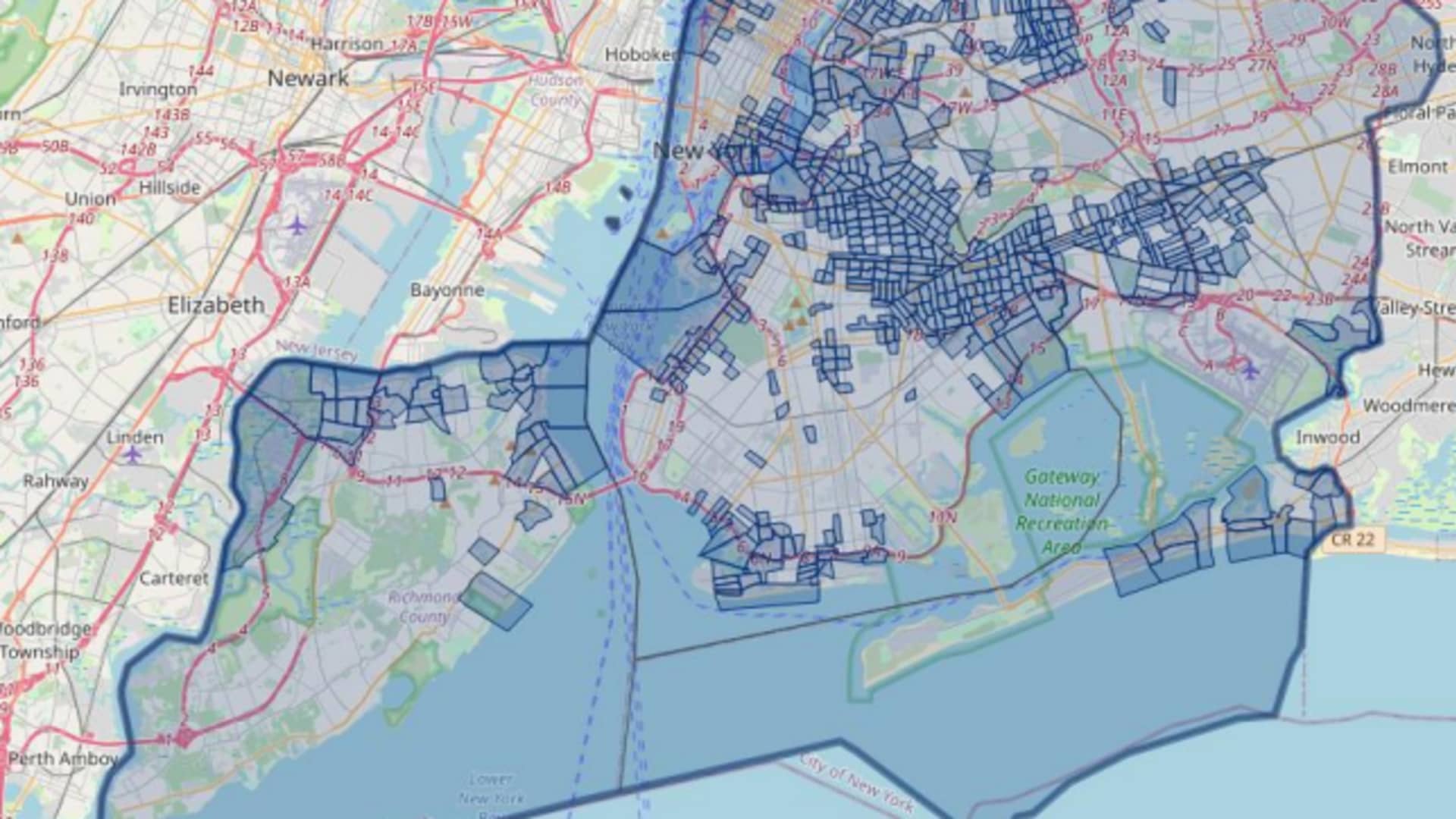New York identifies ‘disadvantaged communities’ that will receive extra climate funding

People walk through the Brooklyn Bridge during a strike for climate on March 03, 2023 in New York City. Protesters demand New York State support found and pass the Climate Jobs, and Justice Package.
Leonardo Munoz | Corbis News | Getty Images
The state of New York has finalized a list of disadvantaged communities that are mandated to receive at least 35% of the total statewide spending on clean and energy efficiency programs, a decision that will target regions most affected by air pollution and climate change.
The state’s Climate Justice Working Group, composed of representatives from environmental justice organizations, voted this week to finalize 1,736 designated census tracts — more than one-third of all in the state — that are guaranteed to get extra funding.
The disadvantaged communities in New York City are located in large parts of northern Manhattan and the Bronx, as well as central Brooklyn and across the coastlines. Entire neighborhoods in the Bronx, including Soundview, Castle Hill and Hunts Point, are labeled as disadvantaged.
Outside New York City, disadvantaged communities are located in regions such as Western and Central New York, the Finger Lakes, Long Island, Mohawk Valley, Mid-Hudson and the Capital Region.
The state published interactive maps this week highlighting the designated areas in purple. Communities that aren’t highlighted won’t be eligible for specially designated funds that will prioritize reducing greenhouse gas emissions and air pollution in those regions.
The working group chose the communities based on factors reflecting environmental burden and future risk. Such indicators include risk of flooding, exposure to pollution, health vulnerabilities, income levels, and proportion of minority households. Households with incomes under 60% of the state median income are also included as disadvantaged.
“The final adoption of this criteria solidifies New York State’s commitment to climate justice for those underserved communities most impacted by air pollution and harmful greenhouse gas emissions,” said Doreen Harris, president and CEO of the New York State Energy Research and Development Authority.
Disadvantaged communities are mandated to receive at least 35% of state spending on clean energy and energy efficiency programs under New York’s Climate Leadership and Community Protection Act, which was passed in 2019 to address climate change and achieve net-zero emissions in the state by 2050.
The legislation to reduce the state’s emissions could ultimately cost up to $340 billion, according to estimates from a report commissioned by New York’s Climate Action Council. Funding that will fall under the 35% minimum target compliance could cover initiatives to improve air quality, save on energy costs or mitigate the impacts of climate change.
The disadvantaged communities provision under New York’s climate law was modeled on a similar program in California that later became the template for the Biden administration’s Justice40 Initiative. The White House program requires federal agencies to deliver at least 40% of benefits from federal investments in climate change and clean energy to disadvantaged communities.